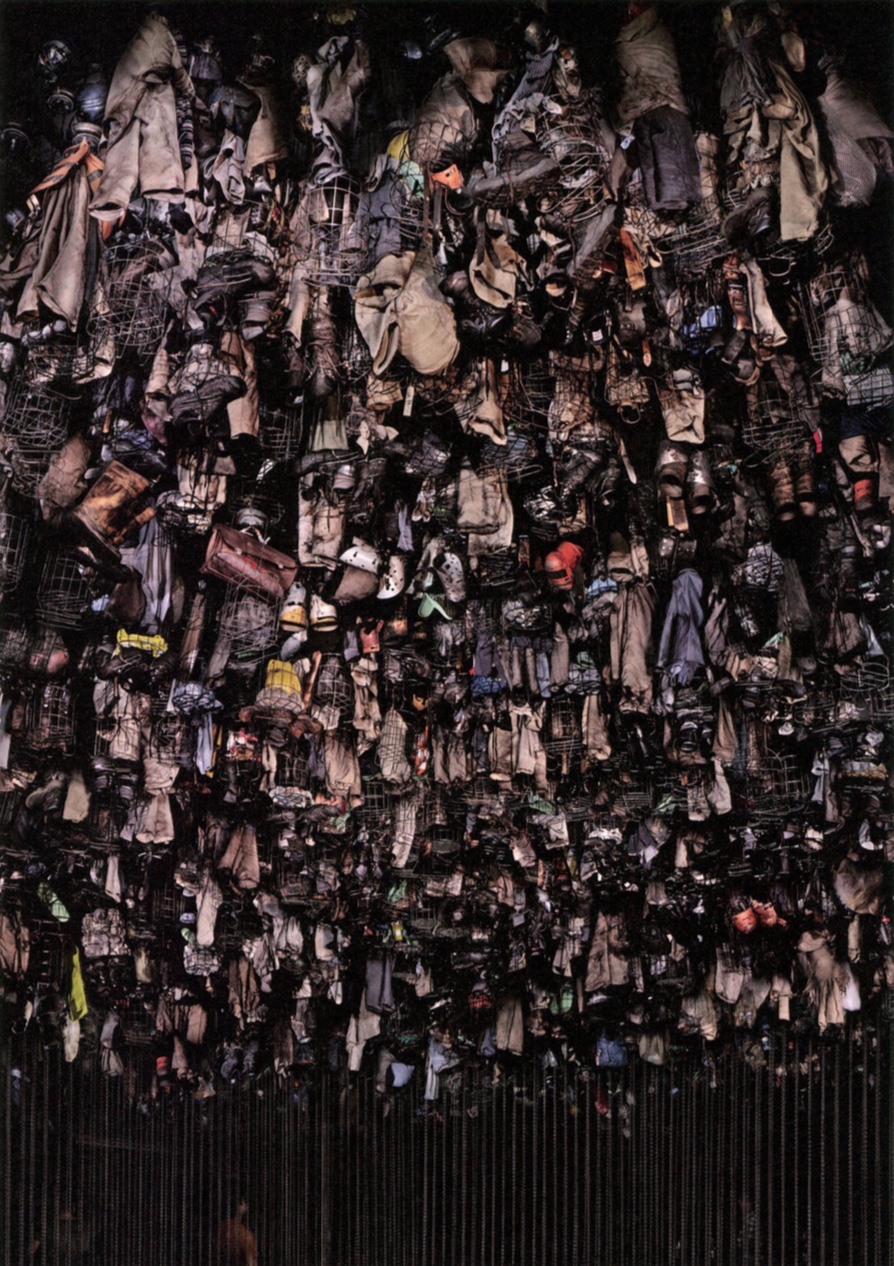Photography (in its classic form) deals with an object or being — a subject — located in the camera’s field of vision at a certain site before a chosen background at a clearly defined point in time. This approach does not only reflect the position and style of the photographer; rather, it appears to be inscribed into the medium of photography itself: the camera selects a concrete object in the world, makes it special through the act of selection, and, through the click of the shutter, makes it into a determinate object that existed at a certain time and place. This principle has contributed to the dominance of subject and perspective and to the incredible triumph of photography.
Andreas Gursky has circulated around the world for the last twenty-five years, carefully selecting subjects at certain moments in time at specific locations-choosing, for example, manufactory sites for contemporary industries, locations where goods are circulated (cargo ports, banks, stock exchanges) or traffic hubs (hotels, ports, and airports) and leisure activities in the broadest sense, from casual free-time pursuits to sports and competitions: strolling in gardens, skiing, football, raves, and racing. Additionally, he has photographed political forums and temples of the arts or of consumerism-providing all his pictures with dates and simple, descriptive titles, like Times Square, Bundestag, Union Rave, Prada II, Engadin, Rhein, Hongkong, Stock Exchange, Bahrain I, Turner Collection, and James Bond Islands.
To this extent Andreas Gursky remains within the tradition. Yet unlike the trophy hunter or the compulsive collector, he has other goals: he aims to uncover structures in the given situations, to visualize social patterns of behavior, to crystallize human constellations. In opposition to the triumph of the individual in the twentieth century, he is not interested in the individual but in the genre, not in the detail but in the system of rules. In individual photographs at the beginning of his career and then later by exhaustively combining, in digital form, numerous photographs into a kind of photographic map, he creates images with great symbolic power. He photographs at central sites of a thriving, mobile, postindustrial capitalist society — even “nature” is a part of it — but he always does so in such a way that the temporal, spatial, and thematic fixed elements are stretched and expanded. As if he were spreading the fixed subject, with its set perspective, across the surface of the image; as if he were interweaving various moments in a layered now and always; as if he were making a spatially and temporally condensed, complex, epic tapestry of images.
Gursky elevates the image into generality. In concrete, contemporary things he seeks universals, general, recurring signs of rules and structures of cohabitation, production, and the ordering of the world. He seeks the “nature of things,” as he himself once said. To this end, he bends photography into photographic images, constructs in his large-scale pictures areas of tension within which the viewers move, torn back and forth between the clarity of the detail and the large structure, the general rule, between the concurrent possibilities of defining and recognizing and of losing oneself again. In his visual vocabulary, it is possible to detect parallels to the visual compositions of painting, from the all-over approach of Jackson Pollock to the color fields of Barnett Newman and the minimal grid structures of Sol LeWitt.
Andreas Gursky has repeatedly taken his photographs from a standpoint resembling that of a general. The position — slightly elevated, at a distance, in any case, detached — makes it possible to abstract from the individual, the present; it provides an overview, opens up a route from the particular to the general. In Hamm, Bergwerk Ost from 2008, however, the direction of the gaze is reversed for once: we have seldom been so (dangerously) close to Gursky. From below, we look up into a cloud of clothes; we gaze at the schwarze Kaue, the changing room of a mine. The miners deposit their work clothing after work in mesh baskets—shoes, belt, tools, shirt, and pants—and raise the basket up and secure it. They go to the showers naked, and then pick up their everyday clothes again in the weisse Kaue, the clean changing room, where they lower their individual clothing baskets down from above.
We are looking at an enormous collection of husks from people who have gone home after their shifts. In this picture, Gursky condenses the real, given situation through the addition of numerous clothes baskets into a large, dense, dark chandelier of clothing, which protects the entrance to the coal mine as the pithead once did and casts a peculiarly leaden light. The clothing floats above us, hung vertically, and the workers (disappearing ghostlike behind the chain curtain) are carried vertically below ground and then back up again. Ever since Christian Boltanski’s piles of clothing, we have known how deeply clothing as husks can recall to us human fortune, suffering, and calamity. Used clothing — cast aside, balled up, stacked — is a universal symbol of human existence. The husks of clothing are representatives, which leave open whether or not they will ever be combined again, whether they will ever be used again.
In this picture of the mine, Andreas Gursky renews his representational ability as a (contemporary) history painter, as an unromantically cool, analytic, and simultaneously keen depicter of sites of activity and world systems as these are reflected in calm nature, in clear architecture, or else in the very thick of it, in the control rooms, the pulsating nodes of reality.

